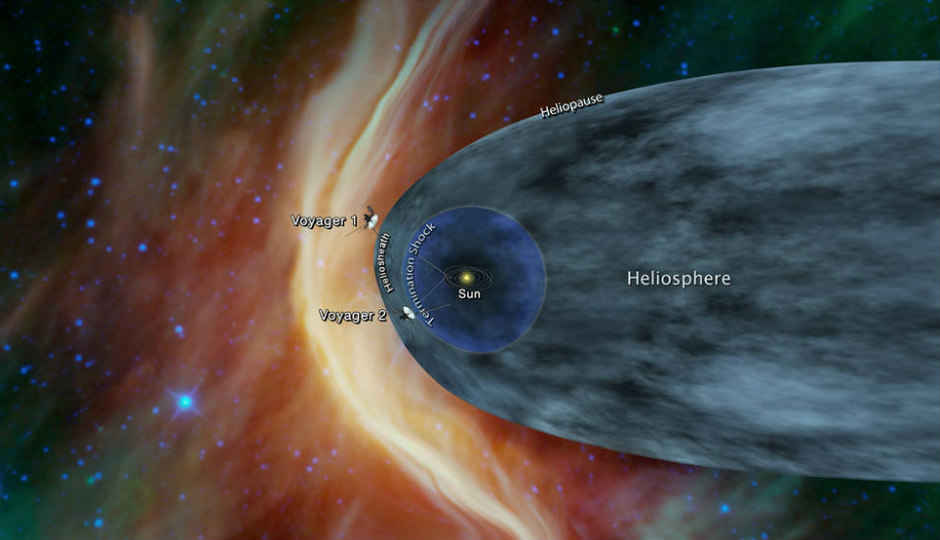Voyager 2 is nearing interstellar space, says NASA

NASA’s Voyager 2 will soon join its brother Voyager 1 in exiting the heliosphere and entering interstellar space. It’s currently detected an increase in cosmic rays, which is an indicator that it’s at the heliopause.
Launched by NASA way back in 1977, the deep-space probe Voyager 2 is now about 17.7 billion kilometres (11 billion miles) away from us (more than 118 times the distance from the Earth to the Sun, in other words). It is, in fact, in the outer boundary of the heliosphere (otherwise called the heliopause) at the moment and nearing interstellar space. According to NASA, Voyager 2 has detected an increase in cosmic rays that originate outside the solar system.
Within the month of August, NASA explains, the Cosmic Ray Subsystem instrument on Voyager 2 has measured a 5-percent increase in the rate of cosmic rays hitting the spacecraft. Its Low-Energy Charged Particle instrument has also detected such an increase in higher-energy cosmic rays. These rays are fast-moving particles that originate outside the solar system. They are blocked by our heliosphere.
Voyager 2’s twin, the Voyager 1, went through this experience of detecting an increase in cosmic rays just before exiting the heliosphere back in May 2012. From that point, it took the spacecraft three months to cross the heliopause and enter interstellar space. So this gives us an idea how long Voyager 2 too will take to go interstellar.
According to NASA, the fact that Voyager 2 is reaching the heliopause six years after its brother Voyager 1 is also relevant. This is because the heliopause moves inward and outward during the Sun’s 11-year activity cycle, which includes solar flares and coronal mass ejections. During the cycle, the Sun sees both a minimum and maximum level of activity.
“We're seeing a change in the environment around Voyager 2, there's no doubt about that,” commented Voyager Project Scientist Ed Stone. “We're going to learn a lot in the coming months, but we still don't know when we'll reach the heliopause. We're not there yet—that's one thing I can say with confidence.” Voyager 2 is presently in the heliosheath, which is the outermost part of the heliosphere.
Cover image courtesy: NASA
Vignesh Giridharan
Progressively identifies more with the term ‘legacy device’ as time marches on. View Full Profile





